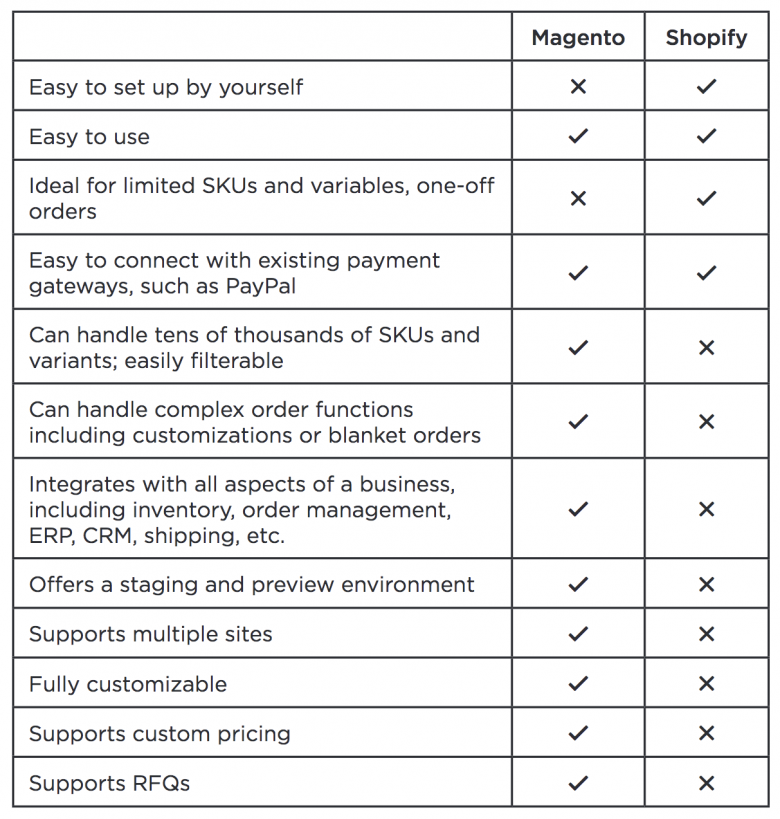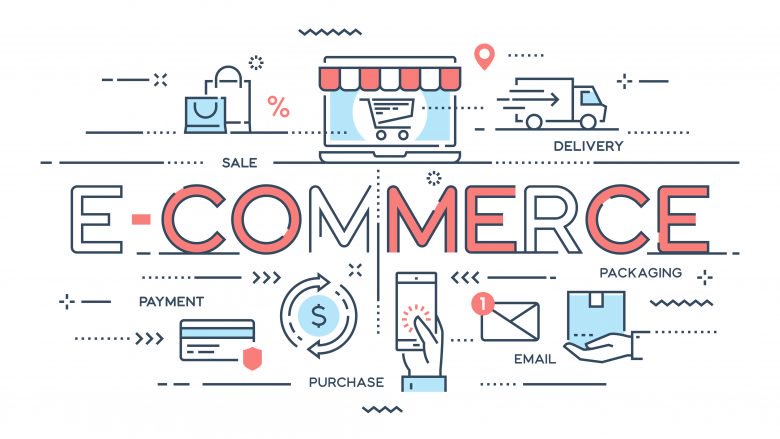(This article originally appeared in Manufacturing Marketing Magazine)
At some point, a manufacturer will ask if it’s possible to sell products to distributors and/or end-users online. Asking this question makes sense as it’s relatively easy, with the tools and platforms available, to integrate eCommerce with an existing website.
However, eCommerce is one facet of an entire business. It ties into everything, from inventory and order entry to shipping and distribution.
For manufacturers, eCommerce can quickly become complex with tens of thousands of SKUs, customizations, multiple pricing models or currencies, and other issues.
While all of these issues are worthy of discussion, the two main challenges faced by manufacturers, when deciding to sell products online are: choosing the right eCommerce platform and then preparing the data for migration.
Can the product/s be sold online?
Not all products lend themselves to eCommerce. One manufacturer, for example, sold custom welders used for making vehicle siding. Each welder was 25’ wide and was made-to-order based on the customer’s specifications.
Because of the customizations, e.g. system add-ons and parts to suit the customer’s workspace, the manufacturer would have had a difficult time selling the product through an eCommerce platform.
For this type of specialized product, we recommend a content heavy website that answers people’s questions and encourages them to initiate contact, whether through email, phone or RFQ.
Ecommerce is a viable option, however, for manufacturers with standalone products, complete systems sold as kits, or consumables and replacement parts.
Challenge #1: Choosing the right ecommerce platform
If you have a small catalog, a limited number of SKUs and/or variables, no custom pricing, and you mainly sell directly to your end users, Shopify is a great starting point. The platform has a low cost to entry, is easy to set up and use, and offers pre-built themes.
The basic theme (which is free) is easily customized to provide a seamless experience for site visitors. It also integrates well with WordPress.
However, Shopify has many limitations for manufacturers wanting to grow their online business.
Integrating with back-end systems and ERPs is difficult, and custom pricing and catalogs aren’t native.
For example, manufacturers of widgets sell in volume, not one-offs, and pricing is based on the volume ordered, material, any design customizations, and when the parts are needed.
In addition, the customer may want to place one order of 10,000 pieces, but have five shipments of 2,000 pieces shipped at specific times of the year.
Manufacturers may have different pricing for different clients or groups (e.g. distributors versus end-users) or some customers need approval to place orders over specific dollar amounts and simply want to generate a quote to start the PO process.
For these complex scenarios and many others, Shopify falls short.
For manufacturers wanting a more robust, flexible and scalable platform, Magento is the eCommerce platform of choice.
Magento offers manufacturers rich out-of-the-box features, seamless third-party integrations and an easy-to-use backend.
Negotiated pricing and custom catalogs are easy to set up, and you can even sell to B2B customers on terms with credit limits.
Many manufacturers start on Shopify (or other similar eCommerce platforms), but as their business grows, move to Magento for its B2B features and functionality.
Challenge #2: Preparing the data
Once the decision has been made to migrate to Magento, manufacturers new to eCommerce and with large numbers of SKUs (in the tens or hundreds of thousands) typically run into the overwhelming hurdle of preparing the data for migration. This hurdle is usually due to one of two scenarios.
Scenario #1: The product catalog is literally a PDF catalog available as a download on the website. Or, the catalog is broken down into various pieces on the website.
The problem with the catalog-is-a-PDF is that site visitors can’t apply filters to find what they’re looking for. For example, when you shop online at a retailer, you typically apply filters based on specific attributes: men’s shoes / boots / size / color / style.
It works the same way for B2B products – buyers need to apply filters to make it easier to find what they’re looking for. A PDF, or flat HTML or WordPress website, doesn’t give them this option.
Scenario #2: The product catalog incorporates tens of thousands of variations or attributes, which haven’t been mapped out or categorized.
In this scenario, a manufacturer may have a spreadsheet that lists all of the products and part numbers, but the attributes for each part number are listed in one field – which means they have to be pulled out one by one before the data can be migrated to the eCommerce platform.
Whether the data resides in a PDF or a spreadsheet, the process is same – extracting the data and creating a taxonomy. This process can take the better part of a year.
A good eCommerce partner will usually have third-party resources available to make this process move more efficiently.
In addition to working with the manufacturer to prepare the data, the eCommerce partner also helps map out the sales and order process, and how the eCommerce system will tie into existing systems such as CRM, ERP, accounting, etc.
The eCommerce partner will also set up permissions and rules for who can access the system and at which levels, as well as creating rules and permissions for various customer types.
Although a complex operation, once the eCommerce system is up and running, manufacturers find that having an online ordering system helps increase sales and makes it easier to work with customers.
Even better, a robust and flexible system such as Magento creates efficiencies across the board that improve customer service while reducing costs.
The following chart lists out the advantages and disadvantages of Shopify and Magento for B2B eCommerce.

Want more manufacturing marketing strategies like this?
Subscribe to Manufacturing Marketing Magazine — the only magazine with practical marketing strategies for industrial manufacturers.


Leave a Reply
You must be logged in to post a comment.